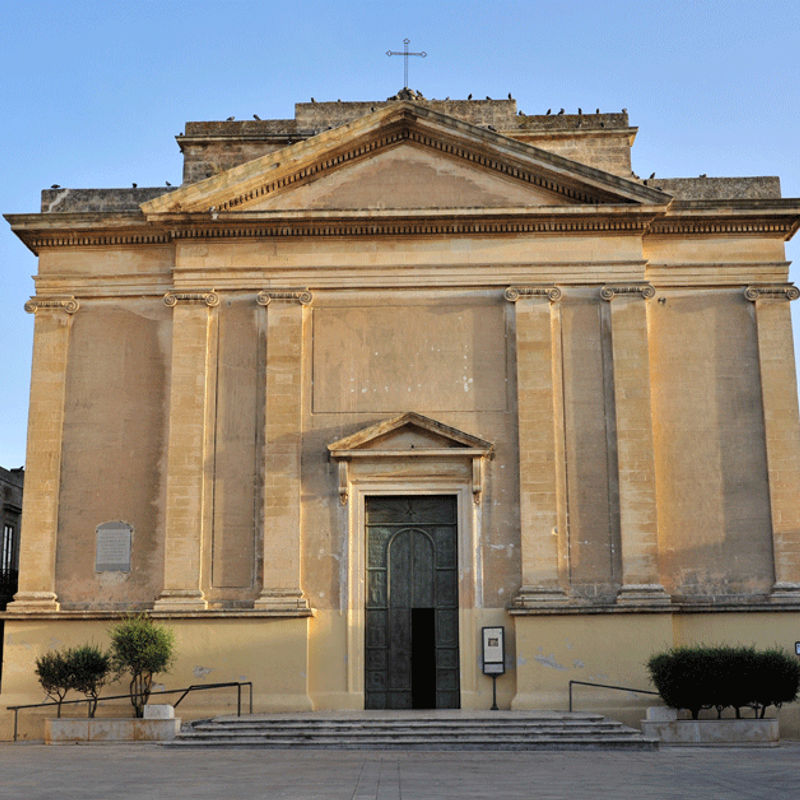
Church of Santi Pancrazio and Francesco d'Assisi

One of the most popular places of worship in San Pancrazio Salentino is the Chiesa Matrice, today dedicated to the patron saints San Pancrazio Martire and San Francesco d'Assisi, which stands majestically in Piazza Umberto I, in the historical centre of the town.
The building stands on the foundations of an older parish church, of which the bell decorated with floral friezes and figures remains, grafted onto the more recent bell tower, built in 1619. The construction of the current church began in January 1859 to a design by the engineer Giuseppe Magliola and was completed in 1872.
The façade, with its clear lines, Ionic elements and neoclassical proportions, is carved in the typical stone of Lecce, which enhances the visual evocation of a Greek temple, such as the solemn effect that greets the visitor on the staircase leading to the entrance portal, a studied, reduced repetition of the tympanum structure of the entire front, further emphasising the ancient reference.
The interior, in the form of a Latin cross with three naves and lateral chapels, raises the eye to the predominant height of the nave, up to the splendid dome with frescoes of angels in the pendentives (1954), the work of Salvatora Murra, and ends in the apse opened by a large triumphal arch, a strong echo of Renaissance architecture. The building is punctuated by windows at the top, which add light to the spiritual atmosphere of the church, which shines all around in the calculated combination of beige plaster, soaring columns with Ionic capitals, polychrome and white Carrara marble and exquisite stuccoes in the classical style.
Among the artworks in this evocative place are the high altar in marble of 1750, sculpted by the Neapolitan Aniello Gentile and formerly kept in the Cathedral of Brindisi; other splendid frescoes by Murra, including majestic figures of the Theological Virtues and the Cardinal Virtues; the great 49-pipe organ, also from the Cathedral of Brindisi; the precious statues of the saints, in papier-mâché or wood, to whom the church is dedicated; as well as several large canvases and precious sacred furnishings, accumulated over time.







